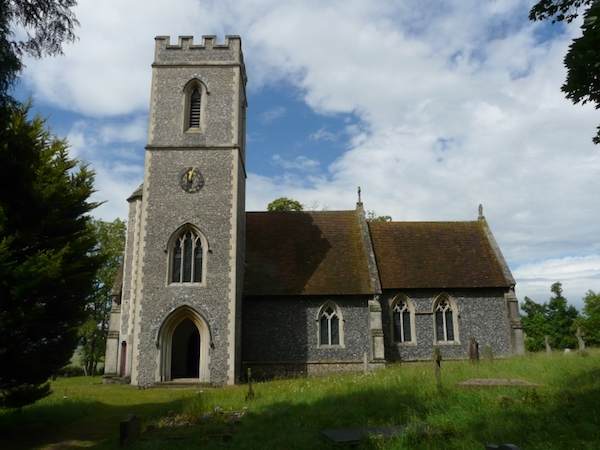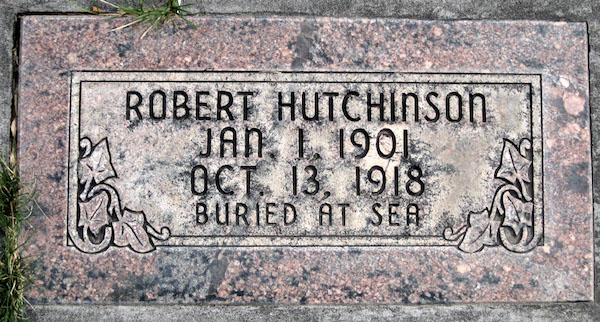In an ideal world, each of our ancestors would have written their own personal histories complete with photos. Unfortunately, most of the information we have are christening records, census data, and death certificates. Is it possible to piece together someone's life with facts and figures?
When I was creating a book of my direct ancestors, I tried to get a full five generations. When researching the lives of 62 people back to 1796, there aren't a lot of recorded stories. What I did have were vital records, great for genealogy, so-so for family history. But when that's all you have, you pull a Tim Gunn and make it work!
Step 1: Just the Facts
Take my ancestor John Fry, for example. I have the bare-bones facts to create a life sketch. He was born May 10, 1815 in Sacombe, Hertfordshire, England to John Fry and Martha Mountford Fry. He married Sarah Hulls April 2, 1839 in Bengeo, Hertfordshire, England. He died November 2, 1879 in Iowa Township, Iowa. If I want to put an entire life sketch together, I'll need more than that.
Step 2: Check for Sources
John has a few sources linked on FamilySearch—a passenger list, christening, a mention in a daughter's christening, a mention in marriage entries, and three census records. Now it's time to delve into each source and see what details I can find.
Step 3: Glean the Info
- June 4, 1815, he was christened in Sacomb, Hertford, England.
- When he married Sarah, he was a blacksmith and she a servant.
- 1841, he lived in Hereford with his wife Sarah and daughter Ann.
- August 21, 1842, his daughter Eliza was christened in Bengeo by the same vicar that married he and Sarah, John Byde. They lived on Port Hill.
- 1861, he lived in Watton-at-Stone with his daughter Eliza, son William, and daughter Alice in a cottage attached to a marine store dealer shop. John was a marine store dealer, Eliza was a dressmaker, and William was a bricklayer laborer.
- 1861, he sailed to New York City with his wife Sarah, daughter Alice, and sons James and John on the ship Underwriter. His occupation was laborer.
- 1870, he lived in Jefferson Township, Harrison County, Iowa with his wife Sarah and sons James and John. He was a farmer, Sarah kept house, James was a day laborer, and John worked on the farm.
- October 22, 1885, his son James married Amanda Mcgavren Johnson in St. John, Iowa.
Step 4: Search the Web
In order to frame his life, I turn to the internet for more details. I look up the various christening locations to see if I can determine what churches they took place in. I search all the towns listed to see what they were like at the time he lived there. I search "marine store shop" to see what he actually did for a living. I also look up the ship "Underwriter" to see if there are any interesting facts about it. Here's what I learned…
John was likely christened at St. Catherine's, the only church in Sacombe. It is largely 14th Century, but was restored in 1855-56. It was used as a location for the movie Enigma about the codebreakers of Bletchley Park in WWII.
The Church of St. Catherine in Sacombe, Hertfordshire, England
Since John and Sarah were married in 1839, the ceremony had to have been at St. Leonard's Church. It's the oldest building in Hertford, dating back to 1120.
Marriage record of John Fry and Sarah Hulls
St. Leonard's Church
Marine Store Dealers began selling components of old ships to mariners. As a whole…they were junk dealers. They bought and sold used cordage, bunting, rags, timber, metal, and other waste materials. It created a barter economy trading crockery, hardware, fur, wool, etc. It's likely John dealt in the latter as Watton-at-Stone was miles from the sea.
After the Underwriter brought John and his family to New York City, it was purchased by the Union Navy for use in the Civil War. It was outfitted as a gunboat to block southern ports. In 1864, it was captured by a Confederate boat crew. There wasn't steam up for it to run, so they burned it.
Artist's rendition of the attack on the USS Underwriter
While living in Harrison County, Iowa, John and Sarah were baptized members of The Reorganized Church of Jesus Christ of Latter-day Saints on April 30, 1871. His death date comes from their church records.
Step 5: Putting it All Together
Even though I don't have a written history of John Fry, I've been able to assemble a life sketch that can help frame the places he lived and work he did. Through research, I gained a connection to my ancestor that wasn't there before.













